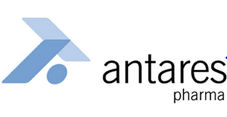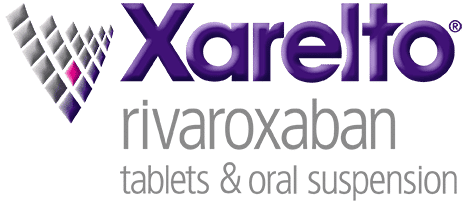- Topline results and additional data from the pivotal SynAIRgy and LunAIRo Phase 3 studies – the largest clinical program of an investigational medication for obstructive sleep apnea (OSA)—show that AD109 achieved significant reduction in apnea-hypopnea index (AHI) at 26 weeks, meeting primary endpoints in both trials, and consistently improved key secondary endpoints related to oxygenation, including oxygen desaturation index (ODI3) and hypoxic burden (HB4)
- Results provide additional support for how AD109, a once-nightly investigational oral pill, addresses the neuromuscular root cause of OSA and the associated oxygenation deficits
- Findings build upon previously reported positive topline data and further validate AD109's potential to transform OSA treatment as Apnimed prepares for a planned New Drug Application (NDA) submission to the U.S. Food and Drug Administration
CAMBRIDGE, Mass., Oct. 17, 2025 /PRNewswire/ -- Apnimed Inc., a pharmaceutical company developing first-in-class oral drugs that address the root causes of obstructive sleep apnea (OSA) and other sleep-related breathing diseases, today announced additional data from its pivotal Phase 3 SynAIRgy and LunAIRo trials evaluating the investigational drug, AD109 (aroxybutynin 2.5 mg/atomoxetine 75 mg), which will be presented as a core interactive session and two late-breaking rapid fire oral and poster presentations at the CHEST Annual Meeting taking place October 19-22, 2025, in Chicago, IL. Full details of Apnimed's presentations at CHEST can be found here.
The additional data built on previously reported topline results show that both studies met their primary endpoint, reduction in apnea-hypopnea index (AHI) at 26 weeks, and across both studies, AD109 demonstrated clinically meaningful improvements in oxygenation, including significant reductions in the oxygen desaturation index (ODI3) and hypoxic burden (HB4) compared with placebo. These results provide additional support for how AD109, an investigational, once-nightly oral pill, can address both the sleep-related neuromuscular dysfunction and oxygenation deficits underlying the disease, highlighting its potential to reshape the treatment of OSA, a serious chronic disease impacting more than 80 million people in the U.S. and a billion people worldwide.
"The consistency of these findings underscores what we've theorized from the start: restoring oxygenation is key to helping people with OSA," said Larry Miller, M.D., Chief Executive Officer of Apnimed. "As we move toward NDA submission, we're not only demonstrating the strength of our science but also building the foundation to deliver AD109 as a potential new oral option for the many people who are unable or unwilling to use existing therapies. Our goal is to expand the range of effective treatments available so more individuals with OSA can find a solution that works for them."
Select SynAIRgy Phase 3 Results
In the mITT population, AD109 achieved a significant reduction in mean AHI from baseline (55.6%, p<0.0001) compared to placebo (19.1%, p<0.0001) at 26 weeks. AD109 also demonstrated improvements in key secondary and exploratory endpoints at Week 26, including:
Significant improvements in oxygenation as assessed by mean reductions in HB4 (60.5%, p<0.0001) and ODI3 (44.8%, p<0.0001)
Significant proportion with reductions of AHI ≥50% (39.6%, p<0.0001)
51.2% of participants treated with AD109 showed a reduction in OSA disease severity category
22.3% of participants treated with AD109 achieved complete OSA disease control (defined as AHI <5 events/hour)
AD109 was generally well-tolerated, with the most common adverse events being dry mouth, insomnia and nausea, and no treatment-related serious adverse events were reported
Select LunAIRo Phase 3 Results
In the mITT population, AD109 achieved a significant reduction in mean AHI from baseline (46.8%, p<0.001) compared to placebo (6.8%, p<0.001) at 26 weeks. AD109 also demonstrated improvements in key secondary and exploratory endpoints at Week 26, including:
Significant improvements in oxygenation as assessed by mean reductions in HB4 (58.2%, p<0.0001) and ODI3 (40.3%, p< 0.001)
Significant proportion with reductions of AHI ≥50% (38.3%, p<0.0001)
45.0% of participants treated with AD109 showed a reduction in OSA disease severity category
22.9% of participants treated with AD109 achieved complete OSA disease control (defined as AHI <5 events/hour)
AD109 was generally well-tolerated, with the most common adverse events being dry mouth, insomnia and nausea. No treatment-related serious adverse events were reported
"What's particularly encouraging about these findings is the improvement in oxygenation — a fundamental biomarker of how well the body is protected during sleep," said Patrick J Strollo, Jr., MD, study chair of the SynAIRgy clinical trial and Vice Chair of Medicine for Veteran's Affairs at the University of Pittsburgh School of Medicine. "In addition to the previously reported significant reductions in AHI, these new data add to the robust AD109 results and suggest that, if approved, it may offer a new way to manage OSA by directly targeting the physiological impact of the disease."
About the SynAIRgy Study
The SynAIRgy study (NCT05813275) was a randomized, double blind, placebo-controlled, parallel-arm six-month clinical trial of AD109, a fixed dose combination of aroxybutynin 2.5mg/atomoxetine 75mg, in participants with OSA who fail or currently refuse continuous positive airway pressure (CPAP) therapy. The trial enrolled 646 adult participants from 73 centers in the US and Canada. Participants were randomized 1:1 to either AD109 or placebo and instructed to take their assigned treatment once-daily before bedtime.
Enrolled participants in SynAIRgy were representative of the real-world patient population, including the diverse demographic composition of the United States and the typical profiles seen in a sleep clinic population. Participants included 49.1% females, multiple racial groups, and varied weight classes spanning healthy weight, overweight, and with obesity. Participants were distributed across OSA severity levels, including mild (34.4%), moderate (42.4%), and severe (23.2%). Participants had symptoms reflective of the OSA patient experience.
About the LunAIRo Study
The LunAIRo study (clinicaltrials.gov identifier NCT05811247) was a 12-month randomized, double blind, placebo-controlled, parallel-arm one-year clinical trial of AD109, an investigational fixed dose combination of aroxybutynin 2.5mg/atomoxetine 75mg, in participants with OSA who are intolerant of or currently refuse continuous positive airway pressure (PAP) therapy. The primary endpoint was assessed at 26 weeks, as with the SynAIRgy Phase 3 trial. The trial enrolled 660 adult participants from 64 centers in the US. Participants were randomized 1:1 to either AD109 or placebo (AD109, n=329; placebo, n=331) and instructed to take their assigned treatment once-daily before bedtime.
Enrolled participants in LunAIRo were representative of the real-world OSA population, include the diverse demographic composition of the United States and the typical profiles seen in a sleep clinic population. Participants included 46% females, multiple racial groups, and varied weight classes spanning healthy weight, overweight, and with obesity. Participants were distributed across OSA severity levels, including mild (37%), moderate (33%), and severe (30%). Participants had symptoms reflective of the OSA patient experience.
About AD109
AD109 is designed to be the first pharmacological treatment to improve oxygenation during sleep by directly addressing the neuromuscular root cause of upper airway collapse in people with obstructive sleep apnea. It is a first-in-class anti-apneic neuromuscular modulator, combining aroxybutynin, a novel antimuscarinic, and atomoxetine, a selective norepinephrine reuptake inhibitor (NRI). Their combined pharmacological synergy targets the underlying neuromuscular root cause of OSA. AD109 is an investigational, once-daily pill taken at bedtime that is designed to lower the complexity of intervention and may help more people benefit from effective, restorative sleep. In a disease characterized by complex and invasive treatment options, AD109 may be a simple solution to help improve oxygenation for people living with OSA.
About Obstructive Sleep Apnea
Obstructive sleep apnea (OSA) is a serious, chronic sleep-related breathing disease in which the upper airway repeatedly collapses during sleep, leading to intermittent oxygen deprivation. It is caused by two overlapping mechanisms: neuromuscular dysfunction during sleep and predisposing anatomic abnormalities. OSA affects individuals across all walks of life, impacting both males and females of all age groups, ethnicities, and weight classes, including those with or without obesity. An estimated more than 80 million people in the United States and nearly one billion people worldwide suffer from OSA. Up to 80% of people living with OSA are undiagnosed and therefore untreated.
An individual with OSA can experience hundreds of sleep apnea events in a single night, each one reducing the blood oxygen levels and negatively impacting cellular functions vital to normal health and function. Failure to effectively treat OSA increases the risk of serious long-term health consequences, including cardiovascular disease, neurocognitive impairment, metabolic dysfunction, and early mortality. Yet, the majority of those diagnosed with OSA refuse, abandon, or underutilize treatment. Currently, no available pharmacological treatments directly address the underlying neuromuscular dysfunction that is present in OSA.
About Apnimed
Apnimed is a privately held, clinical-stage pharmaceutical company based in Cambridge, Massachusetts, dedicated to transforming the treatment landscape for sleep-related breathing diseases. We believe the introduction of simple, once-nightly oral drugs may dramatically expand diagnosis and the reach of treatment for people with OSA. OSA, like other common chronic diseases such as diabetes or hypertension, would benefit from having multiple drugs with differing mechanisms to more fully address the heterogeneity of disease pathophysiology. Apnimed envisions a new era where novel oral therapies simplify intervention, expand the reach of diagnosis and treatment, and help more people get the oxygen and restorative sleep needed to thrive.
Apnimed is advancing a robust pipeline of oral pharmaceutical product candidates designed to improve oxygenation in individuals living with OSA and other chronic sleep-related breathing diseases. Our lead candidate, AD109, could become the catalyst for a new oral treatment paradigm for OSA that has been historically limited to cumbersome devices or invasive surgeries. Apnimed is also developing several therapies as part of its joint venture with Shionogi & Co., Ltd., Shionogi-Apnimed Sleep Science.
Learn more at apnimed.com or follow us on X and LinkedIn.
Media Contact:
[email protected]
Investor Contact:
[email protected]
SOURCE Apnimed, Inc.
WANT YOUR COMPANY'S NEWS FEATURED ON PRNEWSWIRE.COM?
440k+
Newsrooms &
Influencers
9k+
Digital Media
Outlets
270k+
Journalists
Opted In
GET STARTED



















